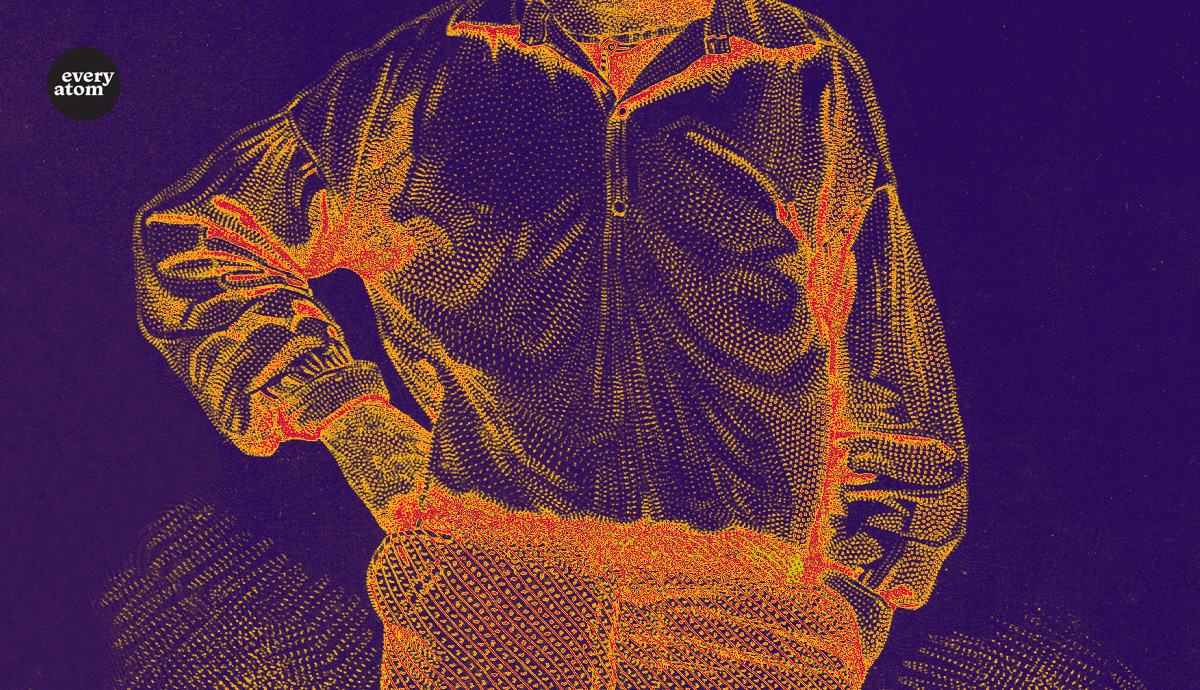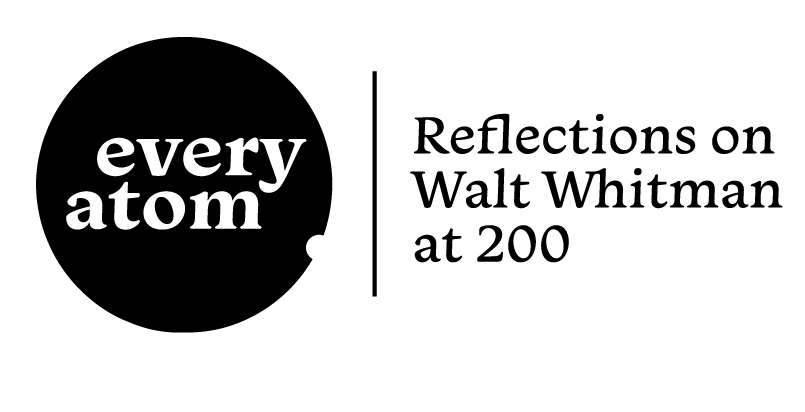Every Atom | No. 186
Introduction to Every Atom by project curator Brian Clements
The journey with Whitman is perpetual, but to continue with him means we also return. Since Whitman offers “words of a questioning,” we are encouraged to revise as we reflect.
I first called upon this passage as an epigraph to my senior thesis in college, which made no other reference to Whitman. I assumed Whitman’s words were “omniverous” enough (so he describes them in the lines immediately preceding) to initiate what I had hoped to say about James Joyce as a cultural critic in his fiction. Whitman’s verb “indicate” suggests the writer’s semiotic power. The words index the world.
When I returned in graduate school, this time to study Whitman at length, I noticed anew the distinction the poet advances between artful objects made and the worlds of their making. The passage includes a questioning of the very image-making enterprise at work in “this printed and bound book,” begun most famously with an engraving from a well-taken daguerreotype. I had my mind’s eye then on Whitman’s photographic poetics. The reflexive questioning in this passage moves the reader into the mode of rethinking, just as one could move a daguerreotype from positive to negative image with a shift of the hand. We indicate reality in our representational forms, but we also loose related parts of the world, body and mind, in the process.
Every way of seeing, as the rhetorician Kenneth Burke put it, is a way of not seeing. More recently, I have returned to Whitman’s lines in order to glean for my students rich examples of rhetorical structures. Parataxis, anaphora, and isocolon are well known in Whitman, and here these figures of repetition are vivid and vital. Here, too, the figures antithesis, aporia, and auxesis amplify and parallel tensions implicated in Whitman’s compressed rhetorical questioning, or erotema. The repeated ellipses, which elsewhere in the poem tend to pause or join, are here signs of displacement and suggest a measure of distance. They mark the doubt in the questions that follow.
But the answers? Whitman himself returned and revised, of course, and will later admonish and yet encourage in one of the revisions of this poem (what would later become section 38), calling his pupils forward: Continue your annotations, continue your questionings.
Recommended
Nor’easter
Post-Op Appointment With My Father
Cedar Valley Youth Poet Laureate | Fall 2024 Workshop







